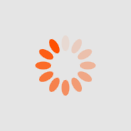

Six tips to successfully launch your own digital signage communication
Investing in digital signage is important. What to consider?
Digital signage is popular It is impossible to imagine our lives without info on displays. Screen communication is massively used as a handy tool to get a message across. This applies to various sectors. Digital signage, also known as narrowcasting, is a fixed value in both B2C and B2B organisations. The healthcare and hospitality sectors do not escape the phenomenon either. Interested in starting up digital signage for your company? We would like to give you some tips that might come in handy.
1. Choose user-friendly software. It is better to invest in a high-quality solution that allows employees to put information on screens efficiently and quickly than in a cheap solution that wastes a lot more time. This only benefits the user's job satisfaction.
2. Innovation is important because digital signage is changing rapidly. What you buy today may be obsolete again tomorrow. So go for a solution that offers regular innovations. That way, you will not be left behind!
3. A one-off investment versus an annual subscription? A one-off investment usually requires a larger chunk of the budget. It is also likely that the package is modular, requiring additional investments such as a maintenance contract, purchase of media players, etc. An annual subscription includes (in most cases) much more.
4. Opt for a solution with additional services! Digital signage is a technical solution. Support is important here! Is a support subscription included? Can you add your own content without intervention by the developer? Are updates provided? Is hardware included or do you have to buy it separately?
5. Go for a structured communication plan. Think carefully about what you want to use the screens for. Is it to share internal information or do you want to enhance the experience in a shop? How often will the screens be updated with new content?
6. Use widgets! Widgets contain integration with external sources, such as weather items, news items, social media and calendar integration. These widgets are read automatically and draw the attention of your target audience.